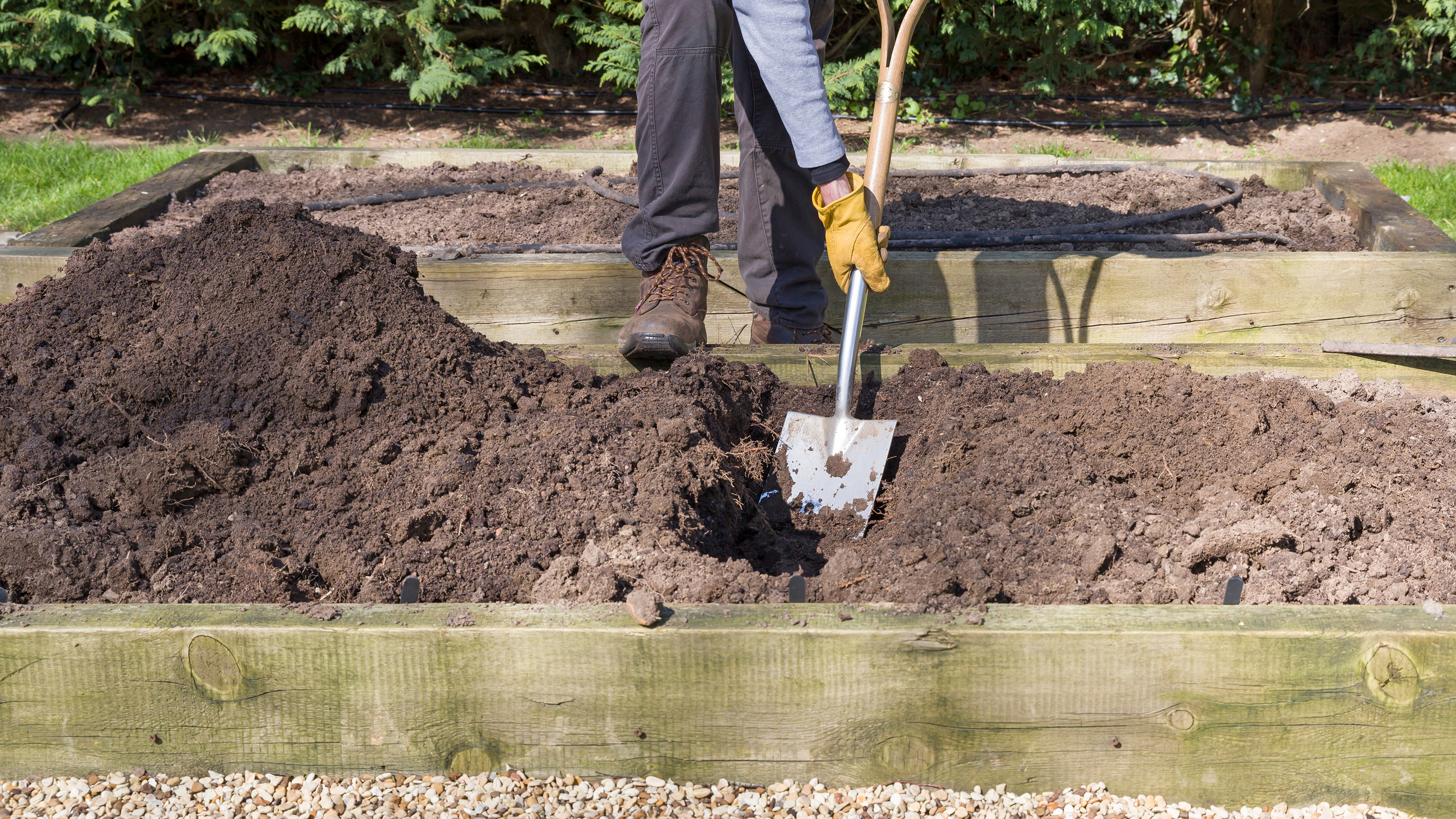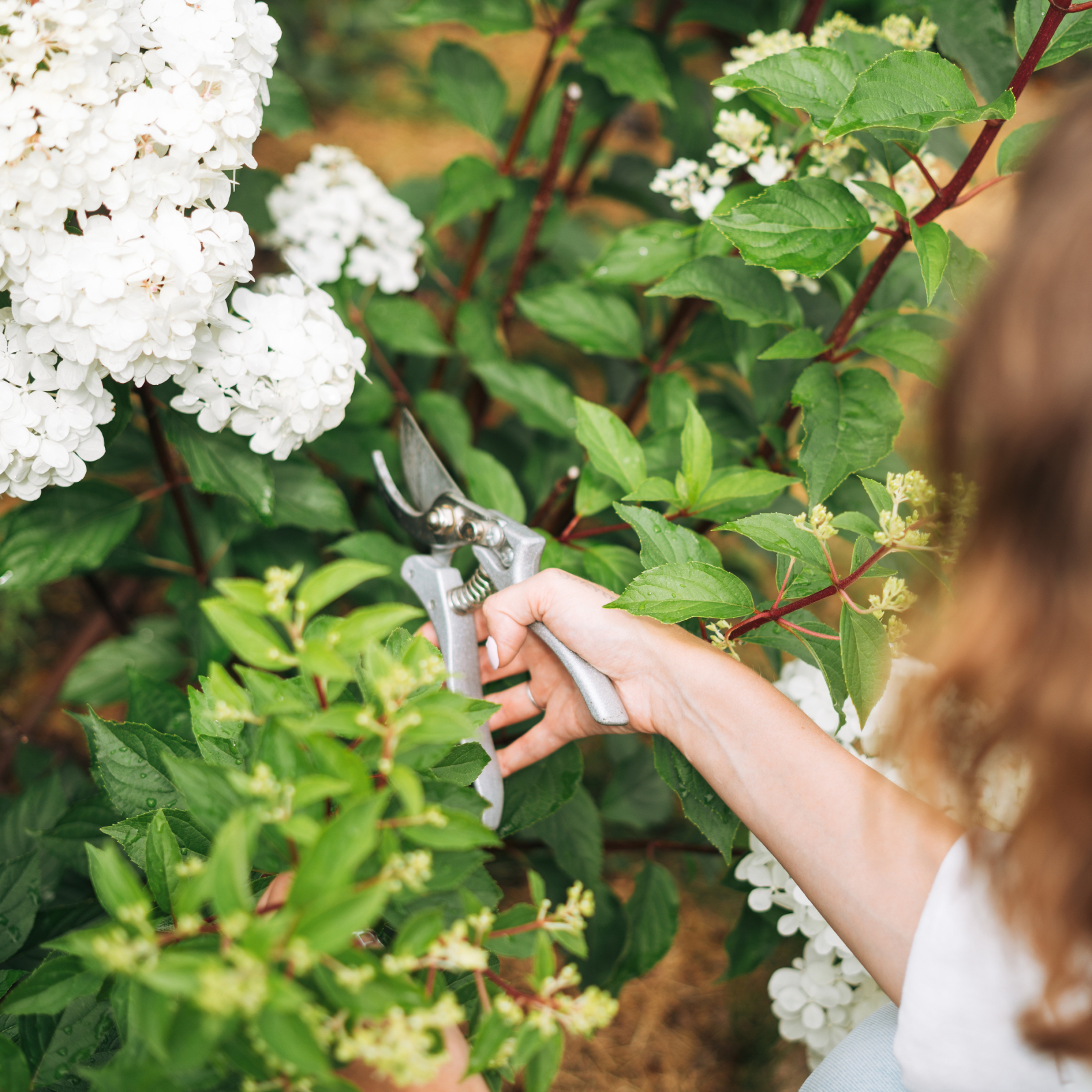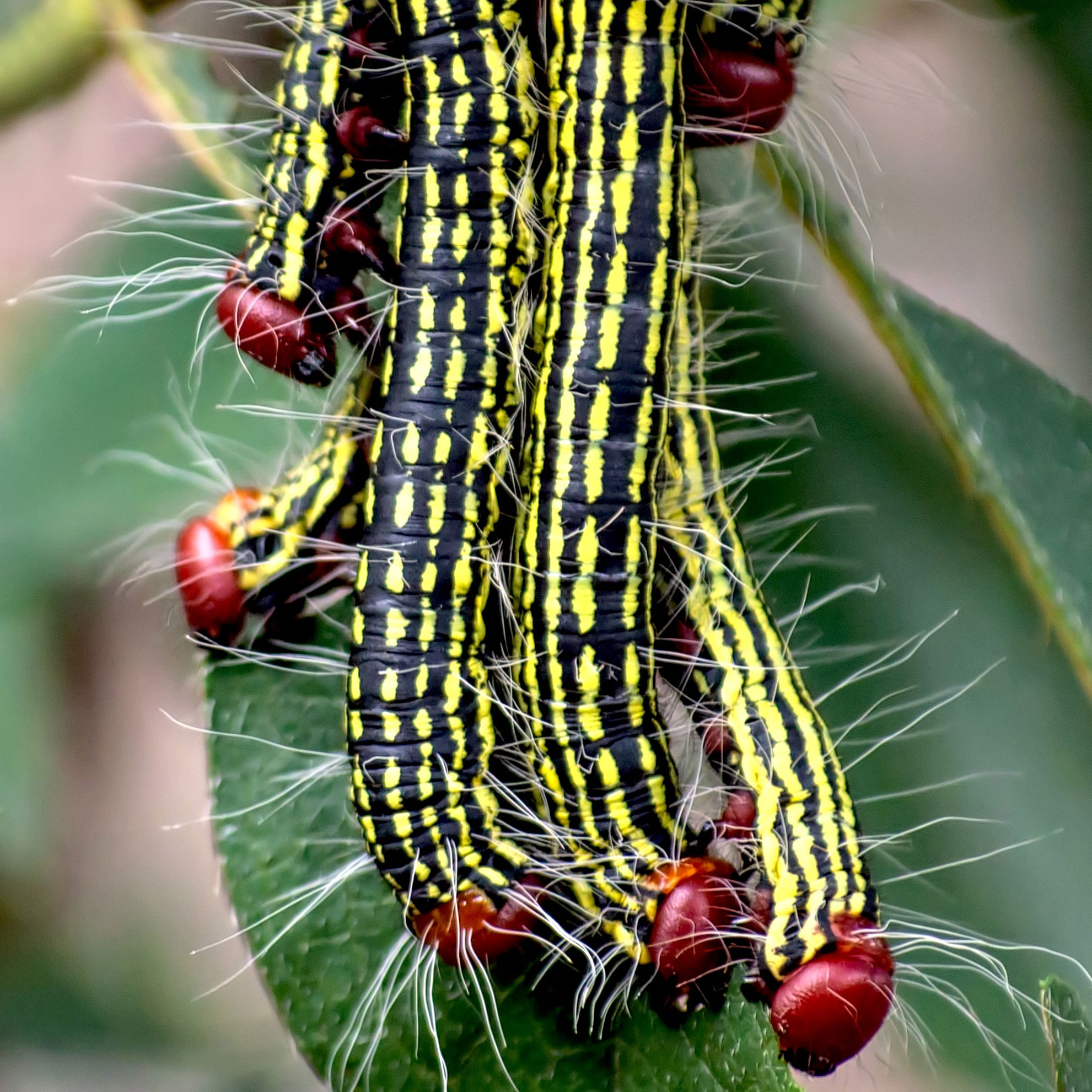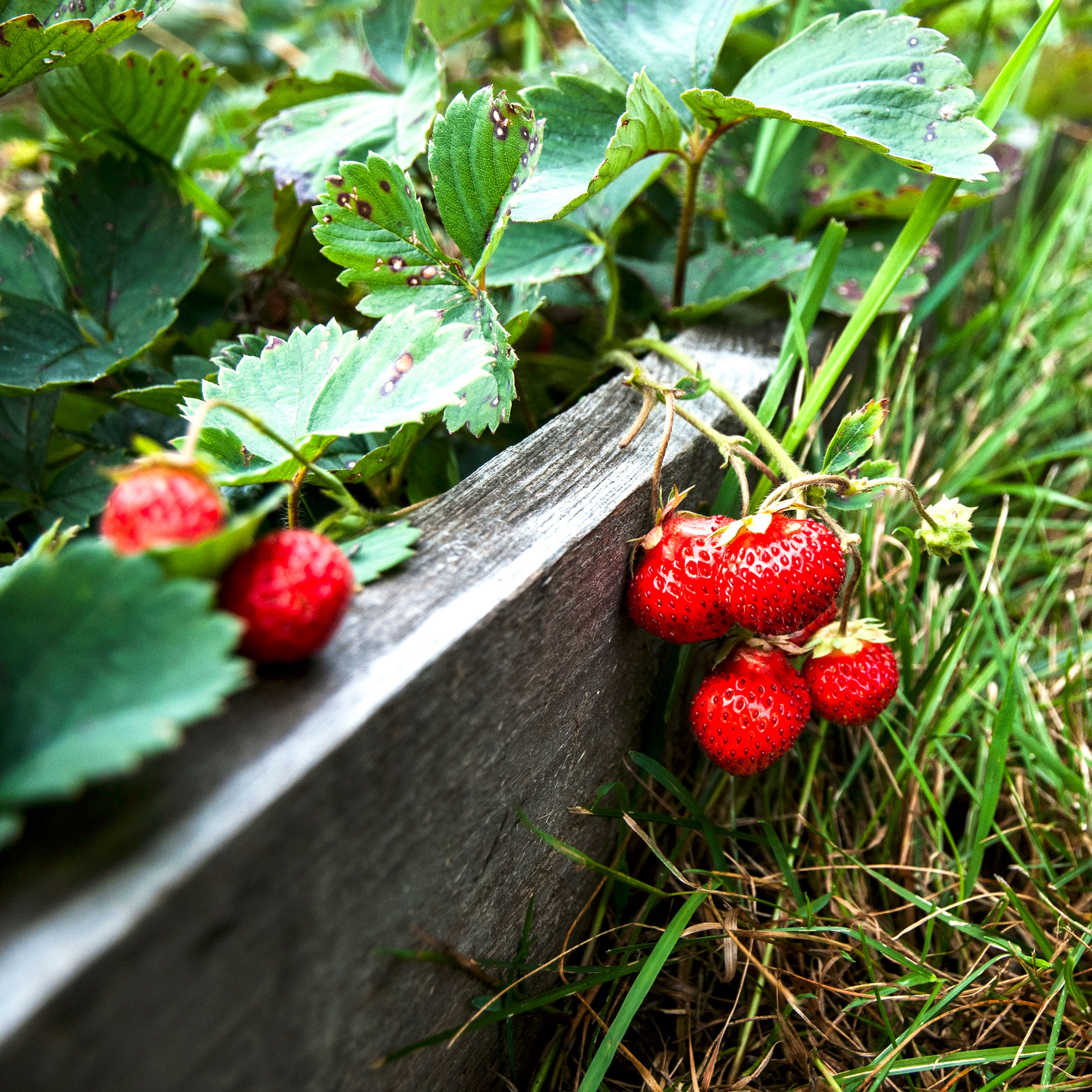Raised Bed Soil Depth: How Much Soil Goes In A Raised Bed
There are many reasons to create raised beds in the landscape or garden. How much soil goes in a raised bed depends on the bed height, and what will be grown. Find out how to establish the perfect depth.


There are many reasons to create raised beds in the landscape or garden. Raised beds can be an easy remedy for poor soil conditions, such as rocky, chalky, clay, or compacted soil. They are also a solution for limited garden space or adding height and texture to flat yards.
Raised beds can help deter pests like rabbits. They can allow gardeners with physical handicaps or limitations easy access to their beds as well.
How much soil goes in a raised bed depends on the bed height, and what will be grown. Continue reading for more information on raised bed soil depth.
About Soil Depth for Raised Beds
Raised beds can be framed or unframed. Unframed raised beds are often called berms and are simply garden beds made of mounded up soil. These are most commonly created for ornamental landscape beds, not fruit or vegetable gardens.
Unframed raised bed soil depth depends on what plants will be grown, what the soil conditions under the berm are, and what the desired aesthetic effect is.
Trees, shrubs, ornamental grasses, and perennials can have root depths anywhere between 6 inches (15 cm.) to 15 feet (5 m.) or more.
Tilling the soil beneath any raised bed will loosen it up so that plant roots can reach the depths that they need for proper nutrient and water uptake.
Gardening tips, videos, info and more delivered right to your inbox!
Sign up for the Gardening Know How newsletter today and receive a free copy of our e-book "How to Grow Delicious Tomatoes".
In locations where the soil is of such poor quality that it cannot be tilled or loosened, raised beds or berms will need to be created higher, resulting in more soil needing to be brought in.
How Deep to Fill a Raised Bed
Framed raised beds are frequently used for vegetable gardening. The most common depth of raised beds is 11 inches (28 cm.) because this is the height of two 2x6 inch boards, which is commonly used to frame raised beds. Soil and compost are then filled into the raised beds to a depth just a few inches (8 cm.) below its rim.
A few flaws with this are that while many vegetable plants need a depth of 12 to 24 inches (31-61 cm.) for good root development, rabbits can still get into beds that are less than 2 feet (61 cm.) high, and a garden 11 inches (28 cm.) high still requires a lot of bending, kneeling, and squatting for the gardener.
If the soil beneath a raised bed is not suitable for plant roots, the bed should be created high enough to accommodate the plants. The following plants can have 12 to 18 inch (31-46 cm.) roots:
- Arugula
- Broccoli
- Brussels sprouts
- Cabbage
- Cauliflower
- Celery
- Corn
- Chives
- Garlic
- Kohlrabi
- Lettuce
- Onions
- Radishes
- Spinach
- Strawberries
Root depth from 18 to 24 inches (46-61 cm.) should be expected for:
Then there are those having much deeper root systems of 24 to 36 inches (61-91 cm.). These may include:
Decide on the type of soil for your raised bed. Bulk soil is most often sold by the yard. To calculate how many yards are needed to fill a raised bed, measure the length, width, and depth of the bed in feet (you can convert inches to feet by dividing them by 12).
Multiply the length x width x depth. Then divide this number by 27, which is how many cubic feet are in a yard of soil. The answer is how many yards of soil you will need.
Keep in mind that you will most likely want to mix in compost or other organic matter with regular topsoil. Also, fill raised garden beds to a few inches (8 cm.) below the rim to leave room for mulch or straw.
-
 Pruning Limelight Hydrangea Bushes For Bigger Blooms & Stronger Plants
Pruning Limelight Hydrangea Bushes For Bigger Blooms & Stronger PlantsPruning 'Limelight' hydrangea will benefit the shrub. Flowers will be more bountiful the next year and branches will be stronger. Learn how and when to prune.
-
 What’s Wrong With Your Azaleas? Identify, Tackle And Prevent 6 Common Azalea Pests
What’s Wrong With Your Azaleas? Identify, Tackle And Prevent 6 Common Azalea PestsIf you’ve spotted signs of azalea leaf damage, don’t panic – here’s how to identify the most common azalea pests so you can take action swiftly and keep plants healthy
-
 Growing Strawberries In Raised Beds – Here’s Why And How To Do It
Growing Strawberries In Raised Beds – Here’s Why And How To Do ItGrowing strawberries in containers and hanging baskets has its perks, but have you tried growing strawberries in raised beds? Here's how to raise your berry-growing game
-
 Raised Bed Garden Layout Ideas To Maximize Your Vegetable Harvest
Raised Bed Garden Layout Ideas To Maximize Your Vegetable HarvestCurious how to maximize your vegetable garden this year? Try these raised bed layout ideas and tips to get the most out of your space.
-
 How Many Vegetables To Plant Per Person For A Year
How Many Vegetables To Plant Per Person For A YearGauging how much to plant in a vegetable garden can eliminate waste while still producing enough for your family. Click for more.
-
 13 Perennial Fruits And Vegetables You Only Have To Plant Once
13 Perennial Fruits And Vegetables You Only Have To Plant OnceLooking to set it and forget it? Find out which fruits and vegetables can be grown as perennials.
-
 11 Edible Plants For A Year-Round Garden In A Bucket
11 Edible Plants For A Year-Round Garden In A BucketWant to know how to grow food inside your house and which foods do best indoors? Click here to learn all about it.
-
 Frost Tolerance Of Vegetables From Least To Most Hardy
Frost Tolerance Of Vegetables From Least To Most HardyHow cold can vegetables tolerate? Knowing which veggies will survive frosts and freezes is essential for the success of your garden. Click here for more.
-
 Best Vegetables To Pickle Straight From The Garden
Best Vegetables To Pickle Straight From The GardenPickles aren’t limited to just cucumbers. Read on for tips on pickling your fresh veggies.
-
 Benefits Of Planting In Fall Vs. Spring Vegetable Plots
Benefits Of Planting In Fall Vs. Spring Vegetable PlotsLearn why some vegetables do better if you plant them in fall instead of spring.